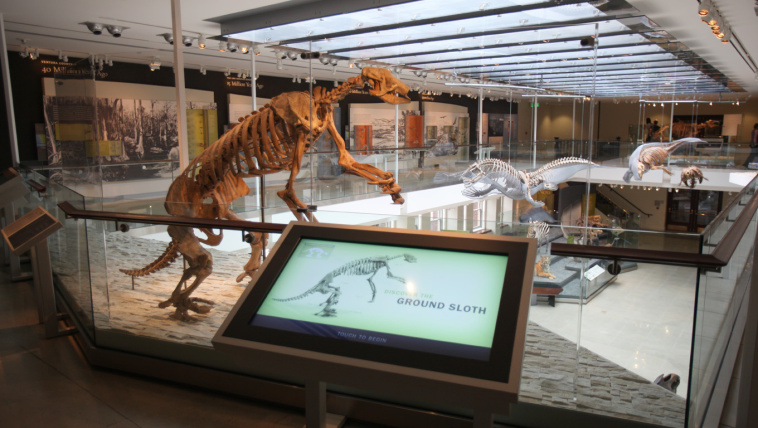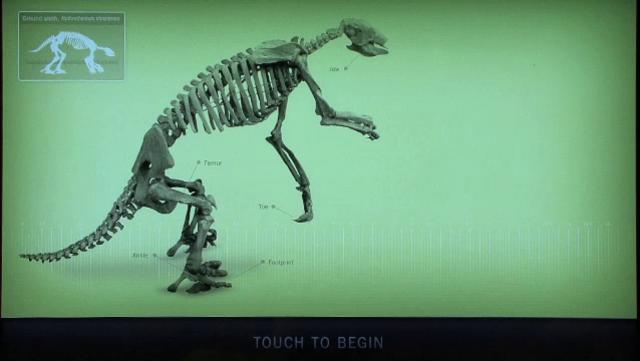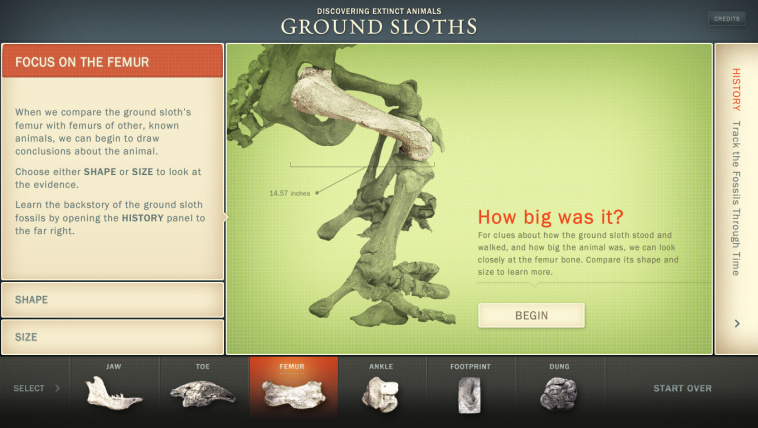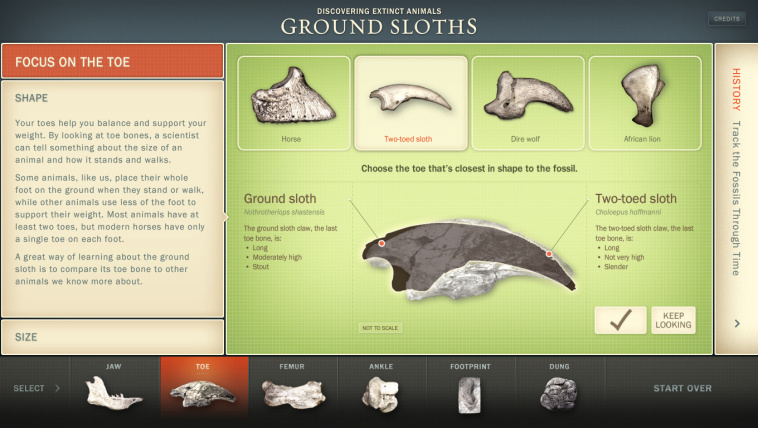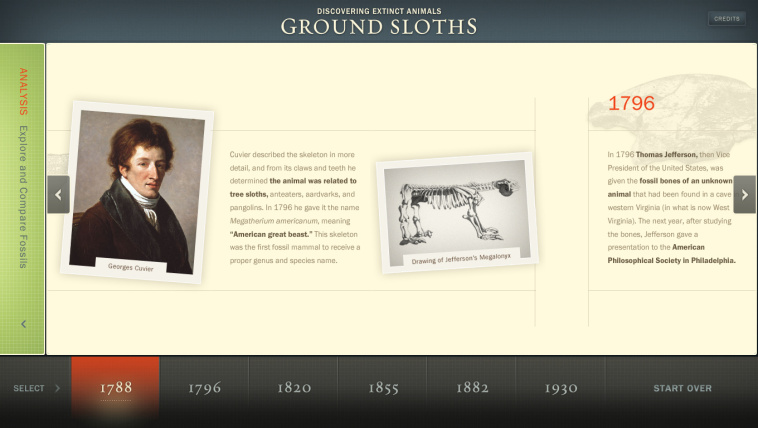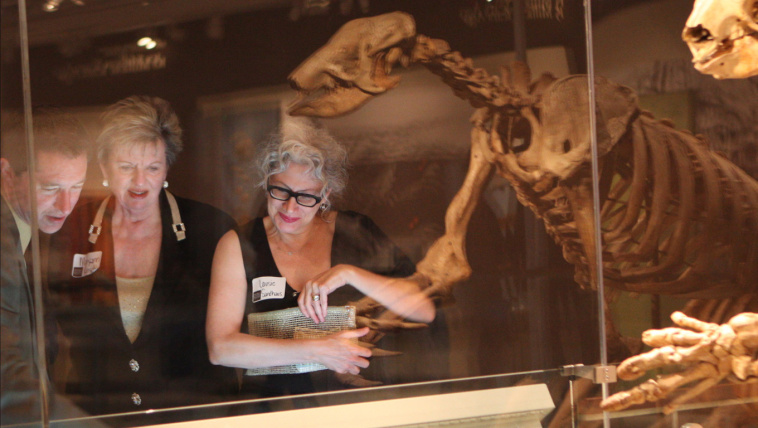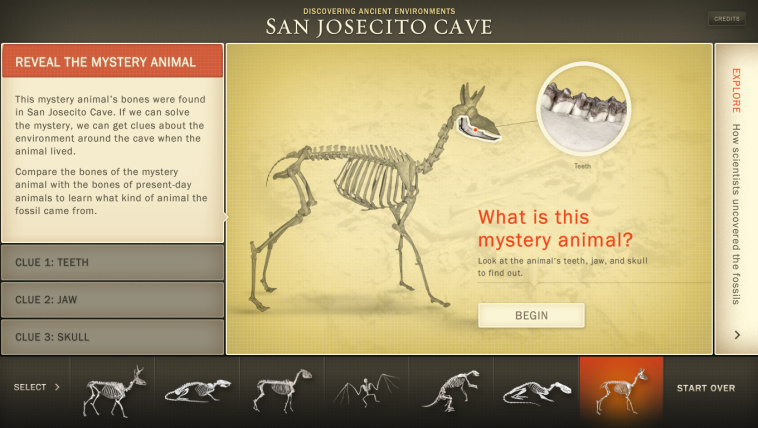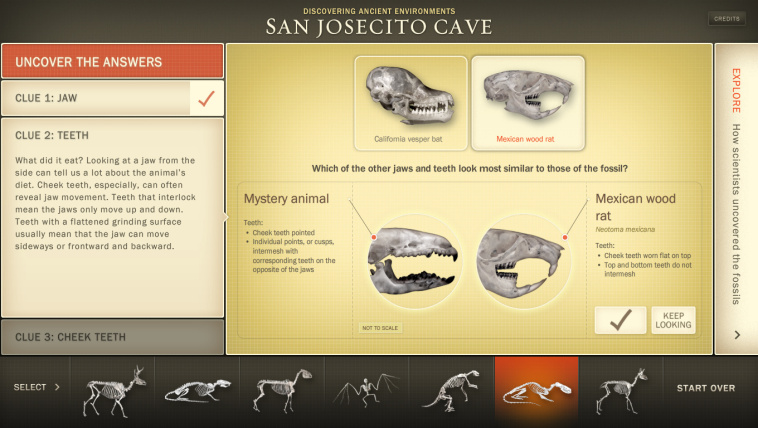How Do We Know?
Mysteries surrounding animals and environments from the past are unraveled through these two activity-based interactives.
Two unique installations explore different aspects of paleontology, one focused on discovering extinct animals, the other about discovering ancient environments. A collection of fossils from the famous San Josecito cave in Mexico and the fossilized remains of an extinct ground sloth provide the backdrop for learning about the process of paleontology. By using side-by-side comparison studies, visitors are prompted to study specific fossil features and contrast them with other bones in the museum’s collection. To further enrich the story, the activities are paired with timelines that chronicle milestones in the study of the ground sloth and San Josecito cave. With these two different methods for sharing knowledge, visitors are provided options for learning about past animals and habitats.
The interactive comparisons teach visitors about how scientists identify mystery animals, and the environments in which they lived. In the ground sloth activity, anatomy and locomotion of the animal are explained through a diversity of evidence, including a jawbone, a footprint, and fossil dung (sure to delight young audiences). In the San Josecito cave interactive, visitors compare the fossil skeletons of seven animals to those of known, modern animals to deduce their identities. Upon completion, the mystery solved, visitors learn more about the environment around the cave when the animal lived, so many years ago.
